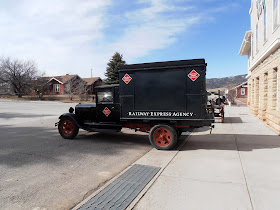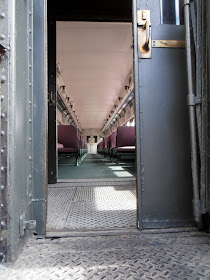The Deep Creek area of Great Smoky Mountains National Park is located near Bryson City, North Carolina. To reach the trailhead from US 19, head north on Everett Street crossing the Tuckasegee River into downtown Bryson City. After 0.2 miles on Everett Street, cross the railroad tracks and turn right on Depot Street. After two blocks, turn left onto Ramseur Street and then make an almost immediate right turn onto Deep Creek Road. Drive 2.3 miles north on Deep Creek Road to the picnic area and another ½ mile to the trailhead at the end of the road.
Three waterfalls are in the area. The first, Tom Branch Falls, is located directly across Deep Creek from the Deep Creek Trail about ¼ mile from the trailhead. Deep Creek Trail is a wide, gently inclined gravel lane that follows an old logging road. This is one of the few trails in the park that allows bicyclists. To reach Indian Creek Falls, continue up Deep Creek Trail another ½ mile to the Indian Creek Trail. Turn right onto the Indian Creek Trail and walk about 300 feet to a side trail on the left that descends to the base of the falls.
To reach the third waterfall, you can retrace your steps to the trailhead and then follow the signed trail to Juney Wank Falls. The trail from the parking area to the waterfall is about ¼ mile and fairly steep. Most of the trail is shared with equestrians. The other option is to continue on the Deep Creek Trail a short distance upstream before branching to the left on the Deep Creek Horse Trail. Hike west and then south along this trail for 1.2 miles to Juney Wank Falls. This route climbs about 300 feet to cross the ridge between the Deep Creek and Juney Wank Branch watersheds. We chose to take this second option to avoid the crowds along the Deep Creek Trail.
We visited the Deep Creek area in late October 2011.
 |
| Pileated woodpecker |
 |
| Deep Creek in the picnic area |
 |
| Deep Creek from the road bridge |
 |
| Tom Branch Falls |
 |
| Autumn colors still hanging on |
 |
| Deep creek from the trail bridge |
 |
| Small cascade on Deep Creek |
 |
| Indian Creek Falls |
 |
| Another view of Indian Creek Falls |
 |
| Confluence of Indian Creek (right) and Deep Creek (left) |
 |
| Indian Creek |
 |
| Juney Wank Falls |
 |
| Juney Wank Branch below the falls |
 |
| Side view of Juney Wank Falls |
Entry to Great Smoky Mountains National Park is free.
The park website is
https://www.nps.gov/grsm.


































































